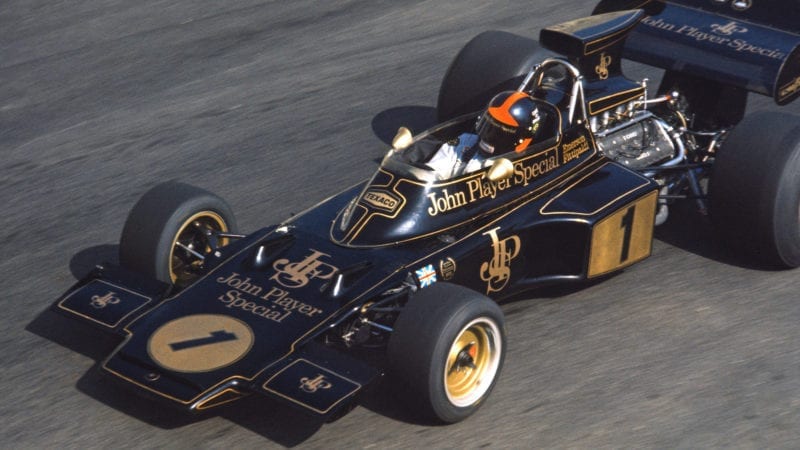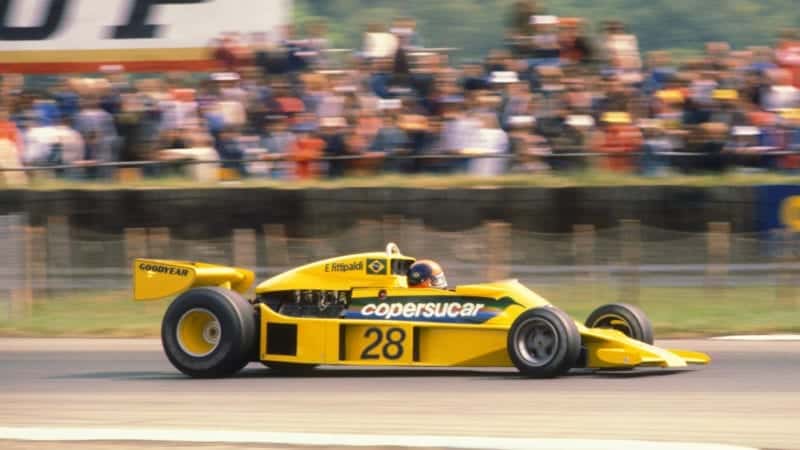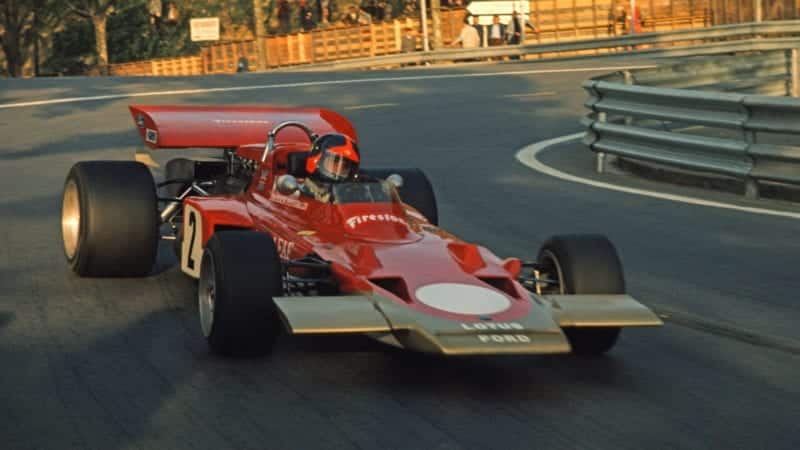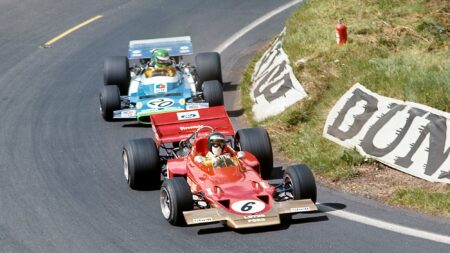Fittipaldi is the first to admit that there was luck involved in this first F1 win, but, for all his lack of experience, he had driven faultlessly, and the effect of his victory on Team Lotus, whose morale had been shattered by the death of Rindt, can hardly be overemphasised.
Now Emerson was a Lotus fixture, and in 1972 he became the youngest driver ever to take the world title, winning five of the 12 GPs on the way.
“I always say that the best cars I ever drove were the Lotus 72 and the ’89 Penske, the PC18, when I was working with Morris Nunn for Patrick Racing. In both cases, we had a basic set-up that would be fast at any track – I could talk to the car, and the car could talk to me.
“When you are completely at one with the car, you know what it’s going to do before it does it. You almost never get that situation, but when you do, it’s fantastic. Those were the two outstanding cars I drove, I would say, and I had them for what may have been my two best drives – certainly the two best dices of my career, anyway.
“Although I won the championship in 1972, in fact the Lotus 72 was at its best the following year, when Ronnie [Peterson] had joined me in the team. And I think my best drive in F1 was in Argentina in ’73. In the last part of the race I had the two Tyrrells ahead of me, Cevert leading Stewart. Jackie was protecting François, and he was keeping me back, but he was completely fair, as he always was. We had a really incredible dice, but eventually he got a slow puncture, which let me through into second place, and in the end I just got by François, with a few laps to go. I was completely on the limit all the race.”

Fittipaldi and his beloved Lotus 72, a combo that won nine GPs
Grand Prix Photo
At this time, Fittipaldi and Stewart were undoubtedly the leading protagonists in F1, and that year it was Jackie’s turn to take the title, his third, with Emerson runner-up.
For 1974, Fittipaldi shook everyone by opting to leave Lotus for McLaren, but it proved a good decision, for he won his second world title that year, and finished second to Ferrari’s Niki Lauda in ’75.
“McLaren was extremely well organised,” says Emerson, “and I enjoyed my two seasons there, but then I made a bad decision. My brother Wilson and I had decided to build our own F1 car: he drove it in 1975, I took over in ’76. But we completely underestimated what it would take to build our own team, technically and financially. There were high points – I finished second in Brazil in ’78, for example – but mainly it was a struggle, and during my last two years in F1, 1979 and ’80,I was going to the races only because it was an obligation. Not good.”
For two more years the team continued, with Emerson’s role now strictly a management one, but by the end of 1982, Fittipaldi Automotive was gone from F1, and the proprietor had returned to Brazil.

Fittipaldi now admits that Copersucar was a mistake
Grand Prix Photo
For a while, he didn’t miss racing at all, but then his enthusiasm was fired again when he began to drive superkarts, just for fun. When invited to drive a March IMSA GTP car at Miami in the spring of 1984, he accepted – and while he was there, a man called Pepe Romero said he was buying a March Indycar, and would Emerson like to drive it? Thus began the second career of E. Fittipaldi, soon to become known as `Emmo’ throughout the US racing community.
“I’d really enjoyed most of my time in F1,” he says, “but I found Indycar racing – CART – more relaxed. There was more of a family environment, and not so much pressure. It was exactly what I needed at that point in my life.”





